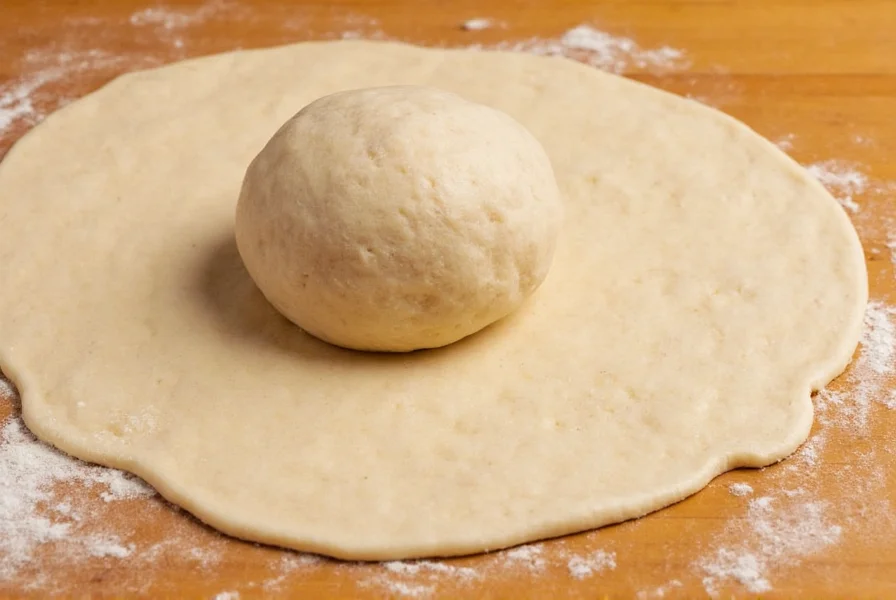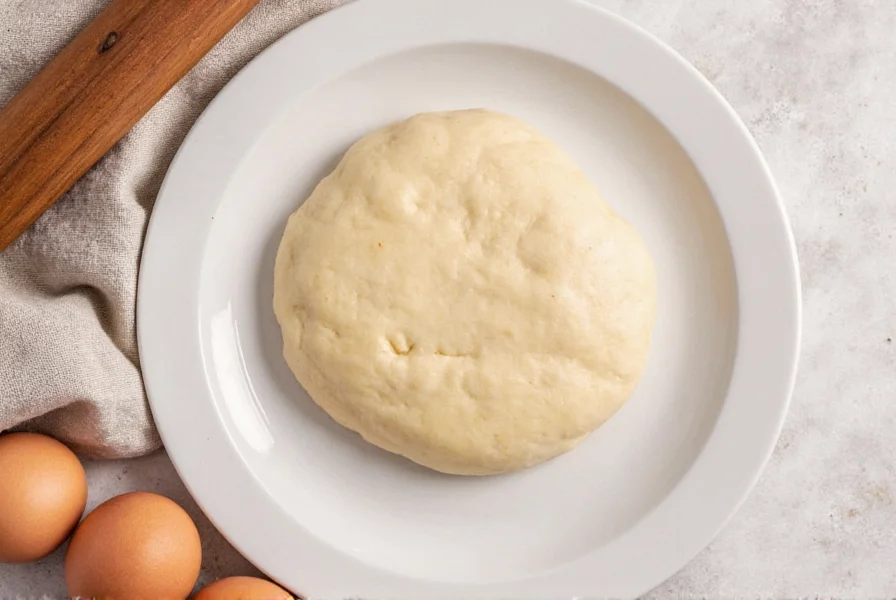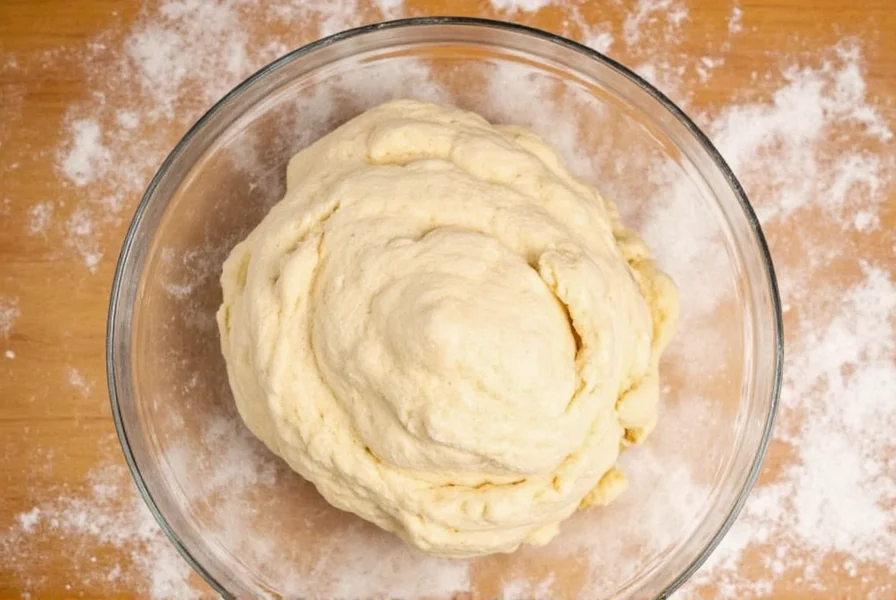The Essential Guide to Perfect Cinnamon Roll Dough
Creating flawless cinnamon roll dough requires understanding the delicate balance of ingredients and techniques that transform simple components into pillowy, flavorful pastries. Whether you're a beginner baker or refining your technique, mastering cinnamon roll dough fundamentals ensures consistent results every time you bake.
Core Ingredients and Their Roles
The magic of cinnamon roll dough happens through precise ingredient ratios and proper handling. Each component serves a specific purpose in developing texture, flavor, and structure:
| Ingredient | Function | Optimal Temperature |
|---|---|---|
| All-purpose flour | Provides gluten structure | Room temperature |
| Unsalted butter | Adds richness and tenderness | Softened (65°F/18°C) |
| Warm milk | Activates yeast, adds moisture | 105-115°F (40-46°C) |
| Active dry yeast | Leavening agent for rise | Dissolved in warm liquid |
| Eggs | Enriches dough, adds structure | Room temperature |
Step-by-Step Dough Preparation
Follow these professional techniques for reliable cinnamon roll dough every time:
Mixing the Dough Properly
Begin by activating your yeast in warm milk with a pinch of sugar. After 5-10 minutes, when the mixture becomes frothy, combine it with softened butter, eggs, and dry ingredients. Mix until a shaggy dough forms, then knead for 5-7 minutes until smooth and elastic. The windowpane test—stretching a small piece of dough thin enough to see light through without tearing—confirms proper gluten development.

First Rise: The Critical Fermentation Stage
Place the kneaded dough in a lightly greased bowl, cover with plastic wrap, and let rise in a draft-free area at 75-80°F (24-27°C). The dough should double in size, typically taking 1-1.5 hours. Resist the temptation to shorten this time—proper fermentation develops flavor complexity and ensures optimal texture. For more consistent results, use a proofing box or place the bowl near (not on) a warm oven.
Common Cinnamon Roll Dough Problems and Solutions
Even experienced bakers encounter issues with cinnamon roll dough. Understanding these common problems helps troubleshoot effectively:
Sticky or Wet Dough
Excess moisture often comes from inaccurate measuring or humid conditions. Instead of adding too much flour during mixing, let the dough rest for 10 minutes—the flour will absorb more liquid. If still too sticky, add flour one tablespoon at a time during kneading. Remember that properly hydrated dough should be slightly tacky but not stick to clean hands.
Dense or Tough Rolls
This typically indicates over-flouring or insufficient kneading. Measure flour using the spoon-and-level method rather than scooping directly from the bag. Under-kneaded dough lacks sufficient gluten development, while over-kneaded dough becomes tough. The ideal dough feels smooth, springs back when gently pressed, and passes the windowpane test.
Dough That Won't Rise
Failed rising usually stems from inactive yeast, liquid that's too hot (killing yeast), or a cold environment. Always test yeast in warm liquid with sugar before incorporating other ingredients. If your kitchen is cool, create a makeshift proofing box by placing the covered dough in your oven with just the light on. The gentle warmth provides ideal rising conditions without overheating.
Advanced Techniques for Superior Results
Professional bakers use these methods to elevate their cinnamon roll dough:
Temperature Control Mastery
Maintaining consistent dough temperature between 75-80°F (24-27°C) during mixing and rising prevents over-fermentation or sluggish rising. Use a digital thermometer to check dough temperature after mixing. If too cold, place in a slightly warmer environment; if too warm, refrigerate briefly to slow fermentation.
Overnight Refrigerated Fermentation
For deeper flavor development, prepare the dough through the first rise, then punch down and refrigerate overnight. The cold fermentation enhances complexity while making morning assembly easier. Remove from refrigerator 1-2 hours before rolling to allow proper temperature recovery.

Storage and Freezing Methods
Proper storage extends your cinnamon roll dough's usability:
- Refrigerated dough: Store shaped but unbaked rolls in an airtight container for up to 24 hours. Complete rising and baking when ready.
- Freezing unbaked rolls: After shaping, place on parchment-lined baking sheets, freeze solid, then transfer to freezer bags. Bake from frozen, adding 15-20 minutes to baking time.
- Freezing baked rolls: Cool completely, wrap tightly, and freeze for up to 3 months. Reheat in a 300°F (150°C) oven for best results.
Variations and Adaptations
While traditional cinnamon roll dough remains popular, these modifications accommodate different preferences and dietary needs:
For a richer dough, substitute some milk with heavy cream. For whole grain options, replace up to 25% of the all-purpose flour with whole wheat flour (adding 1-2 tablespoons extra liquid). Gluten-free versions require specialized flour blends and additional binders like xanthan gum to mimic gluten's structure.
Final Tips for Cinnamon Roll Success
Mastering cinnamon roll dough requires attention to detail but yields delicious rewards. Remember that environmental factors like kitchen temperature and humidity affect dough behavior. Keep notes on your process to refine your technique over time. The perfect cinnamon roll dough should be smooth, elastic, and slightly tacky—never dry or excessively sticky. When rolled and filled properly, it bakes into tender, flavorful rolls with that signature spiral pattern that makes cinnamon rolls so beloved.
Frequently Asked Questions
How long should cinnamon roll dough rise before baking?
Cinnamon roll dough typically needs 1-1.5 hours for the first rise until doubled in size, followed by 30-45 minutes after shaping. The exact time depends on kitchen temperature—warmer environments speed rising, while cooler temperatures slow it. The dough should spring back slowly when gently pressed.
Why is my cinnamon roll dough too sticky to handle?
Sticky dough usually results from excess moisture, inaccurate measuring, or high humidity. Let the dough rest 10 minutes to allow flour absorption before adding more flour. Measure flour properly using the spoon-and-level method. Properly hydrated dough should be slightly tacky but not stick to clean hands.
Can I make cinnamon roll dough ahead of time?
Yes, you can prepare cinnamon roll dough ahead of time. Complete the first rise, then refrigerate overnight. Alternatively, shape the rolls, place them in the pan, cover, and refrigerate overnight. Remove from refrigerator 1-2 hours before baking to allow proper temperature recovery and final rise.
What's the ideal temperature for cinnamon roll dough rising?
The ideal temperature for cinnamon roll dough rising is 75-80°F (24-27°C). This range allows yeast to work efficiently without over-fermenting. In cooler kitchens, create a warm spot near (not on) a turned-off oven or use your oven with just the light on to maintain proper temperature.
How do I prevent filling from leaking out during baking?
To prevent filling leakage, don't overfill the dough, leave a small border along the long edge when spreading filling, and pinch the seam tightly after rolling. Chilling the shaped rolls for 15-20 minutes before baking helps the dough set and reduces leakage during the initial oven spring.











 浙公网安备
33010002000092号
浙公网安备
33010002000092号 浙B2-20120091-4
浙B2-20120091-4